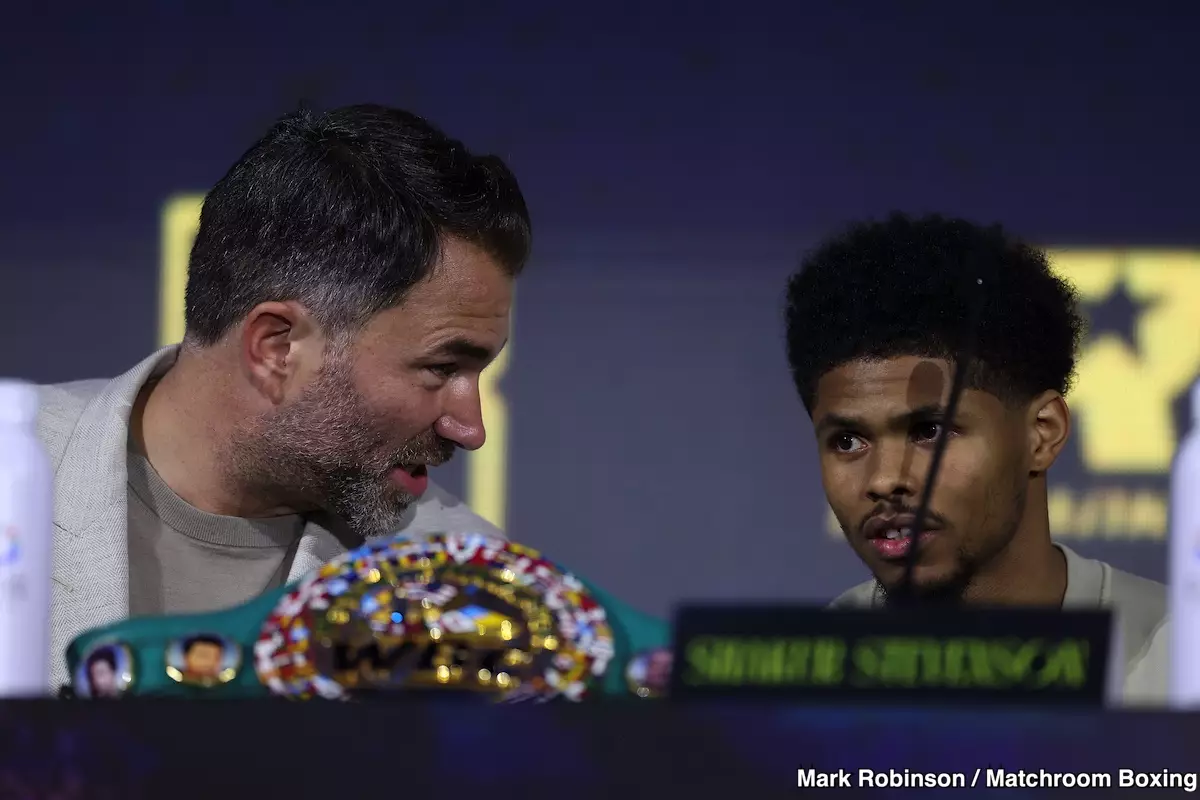Shakur Stevenson’s career is generating significant discussion, particularly surrounding promoter Eddie Hearn’s lofty comparisons to legends like Sugar Ray Leonard. As Stevenson prepares to defend his WBC lightweight title against Josh Padley on February 22nd, the boxing world is rife with opinions contrasting his current stature with historical greatness. This article aims to critically explore the implications of these comparisons, the tangible benchmarks of greatness in boxing, and what Stevenson needs to do to carve out his own undeniable legacy.
Eddie Hearn’s exuberant declarations might foster excitement, but they raise crucial questions about their validity. The reverance earned by fighters like Sugar Ray Leonard stems from not just their ability to win fights but also from the caliber of their opponents and the significant moments they created in the ring. Leonard’s résumé boasts legendary matchups against icons like Roberto Duran, Tommy Hearns, and Marvin Hagler; thus, comparing Stevenson to such a titan can be seen as profoundly misleading. At just 27, Stevenson has yet to face opponents of similar stature, raising skepticism about whether he truly is on the trajectory to greatness that Hearn suggests.
Stevenson’s current record stands at 22-0 with only 10 knockouts, a ratio that might lead to questions about his knockout power and entertainment value as a fighter. Leonard was known for his thrilling style—his ability to mix technical finesse with explosive action that captivated audiences and ensured memorable bouts. It begs the question: Are fans truly engaged with Stevenson’s fights, or do they find them lacking the electric quality that characterized Leonard’s campaigns?
The contemporary boxing scene is more fragmented than during Leonard’s prime. With an abundance of weight classes, championship belts, and promotional companies, the path to establishing a legendary career has both expanded opportunities and inadvertently diluted the competitiveness of the sport. Stevenson’s situation exemplifies this complexity—he finds himself defending titles against replacement opponents like Padley due to unforeseen circumstances. While this is part of a fighter’s journey, it also poses a stark contrast to the glorious path of past champions who unanimously fought the best individuals available.
This reality leads to a crucial aspect of Stevenson’s journey: the necessity for him to challenge himself against top-tier opposition. While current undefeated records hold sway in the eyes of casual viewers, seasoned boxing fans know that true greatness is evaluated against the backdrop of one’s competition. If Stevenson aims to gain genuine respect and achieve comparisons to boxing greats, he must prioritize unification bouts and other high-stakes matches that will define his standing in boxing history.
The dialogue on Stevenson’s potential to join the ranks of boxing legends raises fundamental questions regarding the nature of greatness in sport. Is it merely adorned with accolades and records, or is it also about the narratives one constructs through their fights and rivalries? Greatness is often tied to legacy—how a fighter is regarded by future generations based on their contributions to the sport, the iconic matchups they participated in, and their ability to inspire and engage fans.
For Stevenson, the immediate focus should be on building a more compelling narrative. This could mean pursuing matchups that excite fans and draw attention from both boxing purists and new viewers alike. The victories must resonate beyond the statistics and records; they need to be thrilling enough to leave a lasting impression, similar to how Leonard’s bouts are remembered.
As Stevenson gears up for his title defense against Padley, the boxing community will undoubtedly watch closely to gauge not just the outcome but also how he carries himself in the ring. Should he continue an ascent that challenges the elite of the division, perhaps Hearn’s accolades will find more credible ground.
While Eddie Hearn’s comparisons to Sugar Ray Leonard may raise eyebrows, they also reflect a significant challenge facing Stevenson. True greatness in boxing is not merely being undefeated; it involves proving oneself against the best. As Stevenson navigates his path, the boxing world eagerly awaits whether he will embrace that challenge and fulfill the high expectations set before him.


Napsat komentář